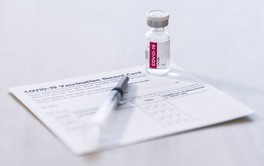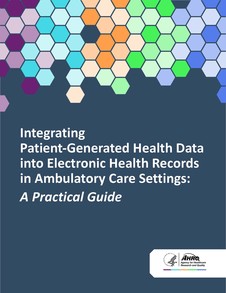| February 1, 2022, Issue #798 In 2019, seven of the top 20 ambulatory surgeries performed at hospital-owned facilities were related to the musculoskeletal system. They accounted for 22 percent of all major ambulatory surgeries. (Source: AHRQ, Healthcare Cost and Utilization Project Statistical Brief #287, Overview of Major Ambulatory Surgeries Performed in Hospital-Owned Facilities, 2019.)  While evidence-based guidelines support the use of buprenorphine as a treatment for opioid use disorder (OUD), adoption has been hindered by inadequate staff training. An AHRQ-funded study used a novel team-based approach called IT MATTRs to provide information, implementation support, and resources for primary care practice teams to improve OUD treatment. As published in the Annals of Family Medicine, training provided to 42 rural Colorado practices was associated with an 87 percent increase in the number of buprenorphine prescriptions in the study region, compared with a 65 percent increase in the rest of the state. While under 20 percent of participating practices reported utilizing buprenorphine treatment prior to training, nearly 75 percent reported providing or referring patients for treatment at 12-month follow-up. IT MATTTRs appears to be an effective resource for implementing buprenorphine treatment for OUD in primary care. Access the study. |  AHRQ has updated its vaccine tracking and reporting tools for nursing homes. These free resources include updated vaccine administration records for both residents and staff, a vaccination tracking tool, and a user guide with step-by-step instructions for using the tracking tool. These tools make it easier for staff to update the facility's electronic medical records, respond to potential vaccine data requests from local health departments or other regulatory agencies, and plan based on the vaccination administration status and rates of both residents and staff. Access the COVID-19 vaccine administration tools. | Two AHRQ-funded studies identified patient-related and other factors associated with infection and subsequent mortality following the surgical implantation of left ventricular assist devices (LVADs). LVADs are battery-operated, mechanical pumps that help the main chamber of the heart send blood to the rest of the body in patients with heart failure. A study published in the Journal of Thoracic and Cardiovascular Surgery found that, among about 13,000 LVAD implantations performed from mid-2012 through mid-2017 in 166 centers, patients who developed infections (regardless of cause) 91 to 180 days after surgery had higher risks of death than did patients developing infections either less than 91 or more than 180 days after surgery. A related review of the literature from 2012 to 2019 published in the Journal of Heart and Lung Transplantation found that increased center experience with LVAD implantation and establishment of a protective barrier at the skin site of the connection to the pump's external power source were most strongly associated with reducing postoperative infections. AHRQ's Patient Safety Network (PSNet) highlights journal articles, books and tools related to patient safety. Articles featured this week include: Review additional new publications in PSNet's current issue or access recent cases and commentaries in AHRQ's WebM&M (Morbidity and Mortality Rounds on the Web).  Register now for an AHRQ webinar on Feb. 22 from 1 to 2:30 p.m. ET on opportunities and recommendations for integrating patient-generated health data into electronic health records in ambulatory care settings. Digital technologies allow patients to track and manage their health by collecting personal health data outside the clinical setting. While these technologies are promising, many ambulatory care practices lack the technical infrastructure, workforce capacity and training to support the use of this data. Speakers will highlight findings from an environmental scan and recent publication of AHRQ's practical guide on integrating patient-generated health data into ambulatory care. Two health systems' approaches to collecting and integrating patient-generated health data into electronic health records will also be described. | | AHRQ in the Professional Literature Antibiotic overuse and stewardship at hospital discharge: the Reducing Overuse of Antibiotics at Discharge (ROAD) home framework. Vaughn VM, Hersh AL, Spivak ES. Clin Infect Dis. 2021 Sep 23. [Epub ahead of print.] Access the abstract on PubMed®. Understanding diagnostic processes in emergency departments: a mixed methods case study protocol. Daniel M, Park S, Seifert CM, et al. BMJ Open. 2021 Sep 24;11(9):e044194. Access the abstract on PubMed®. mRNA COVID-19 vaccine safety in patients with previous immediate hypersensitivity to pegaspargase. Koo G, Anvari S, Friedman DL, et al. J Allergy Clin Immunol Pract. 2022 Jan;10(1):322-5. Epub 2021 Oct 20. Access the abstract on PubMed®. What parents have to say: content and actionability of narrative comments from Child HCAHPS survey. Quigley DD, Predmore Z. Hosp Pediatr. 2022 Feb 1;12(2):205-19. Access the abstract on PubMed®. Applying machine learning across sites: external validation of a surgical site infection detection algorithm. Zhu Y, Simon GJ, Wick EC, et al. J Am Coll Surg. 2021 Jun;232(6):963-71.e1. Epub 2021 Apr 5. Access the abstract on PubMed®. Asynchronous telepsychiatry interviewer training recommendations: a model for interdisciplinary, integrated behavioral health care. Parish MB, Gonzalez A, Hilty D, et al. Telemed J E Health. 2021 Sep;27(9):982-8. Epub 2021 Jan 12. Access the abstract on PubMed®. Successful community discharge among older adults with traumatic brain injury in skilled nursing facilities. Evans E, Gutman R, Resnik L, et al. J Head Trauma Rehabil. 2021 May-Jun;36(3):E186-e198. Access the abstract on PubMed®. Epidemiology, outcomes, and trends of patients with sepsis and opioid-related hospitalizations in U.S. hospitals. Alrawashdeh M, Klompas M, Kimmel S, et al. Crit Care Med. 2021 Dec;49(12):2102-11. Access the abstract on PubMed®. Contact Information For comments or questions about AHRQ News Now, contact Bruce Seeman, (301) 427-1998 or Bruce.Seeman@ahrq.hhs.gov. |





No comments:
Post a Comment